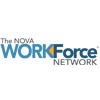 In these challenging times and virtual work environments, it is more important than ever that those in charge fully understand the fundamentals of becoming a successful leader. As many of us have learned in the last year, “leadership” must ever evolve alongside its workforce and business environment--or suffer the consequences of a stagnant style. The following are a few techniques for improving leadership skills.
In these challenging times and virtual work environments, it is more important than ever that those in charge fully understand the fundamentals of becoming a successful leader. As many of us have learned in the last year, “leadership” must ever evolve alongside its workforce and business environment--or suffer the consequences of a stagnant style. The following are a few techniques for improving leadership skills.
The Work Of Leaders Process
The Work Of Leaders Process is a unified 3-step model that incorporates Vision, Alignment, and Execution. This highly effective process is based on strong research and best practices pulled from 300 experts in over 150 organizations. Through it, leaders learn how their own skills impact their approach to creating a vision, building alignment around that vision, and championing execution of the vision:
- To craft a vision, leaders need the right skills for exploration, boldness, and testing assumptions.
- To build alignment, leaders need to communicate with clarity, encourage engaging dialogue, and provide inspiration.
- To champion execution, leaders need to know how to set the momentum, provide appropriate structure, and provide critical and positive feedback.
Agile EQ
Being agile is extremely important for leaders and organizations alike, especially during challenging times. Why? Because leaders need to understand their own “Agile EQ” and how to read the interpersonal and emotional needs of a situation in order to respond correctly. Change can be difficult and many people can become stuck in patterns of behavior that make it hard to choose the most effective response every time. By developing their EQ strengths and understanding their potential, leaders will learn how to reach for new responses and flex then adapt to meet the needs of any situation. Leaders can then help their workforce adopt these skills for the success of the organization.
There are eight essential Agile EQ mindsets that guide interactions. There is no one mindset more valuable than another and the needs of a specific situation will determine what is appropriate. Individuals learn when and how to adopt each mindset in order to become more agile in their approach with others. The eight mindsets are:
- Objective
- Composed
- Receptive
- Empathizing
- Outgoing
- Dynamic
- Self-Assured
- Resolute
Everyone has the ability to stretch their skills when the situation requires it, but it’s not usually easy to come by. Habits can be hard to change—even when the reasons are valid. It takes time, practice, and effort to develop the Agile EQ necessary to succeed. Leaders have to help employees learn and get comfortable with being agile too. The end goal is to have an emotionally intelligent workforce that can fully thrive.
Employee Feedback
Successful leaders solicit feedback, either direct or indirect, from their workforce. For example, employees’ behavioral skills will “make or break” the productivity and culture of an organization. Leaders should determine the non-technical skills expectations needed for employees and provide the appropriate training that is accountable through performance plans and 360 feedback. The topics chosen should enhance interpersonal interactions, increase effective communications, enable productive conflict to flow, and instill a culture of trust.
Suffice it to say, leading today requires greater attention paid to its impact on the workforce’s wellbeing and development as well as on the organization’s opportunities to thrive. It’s all connected!
















